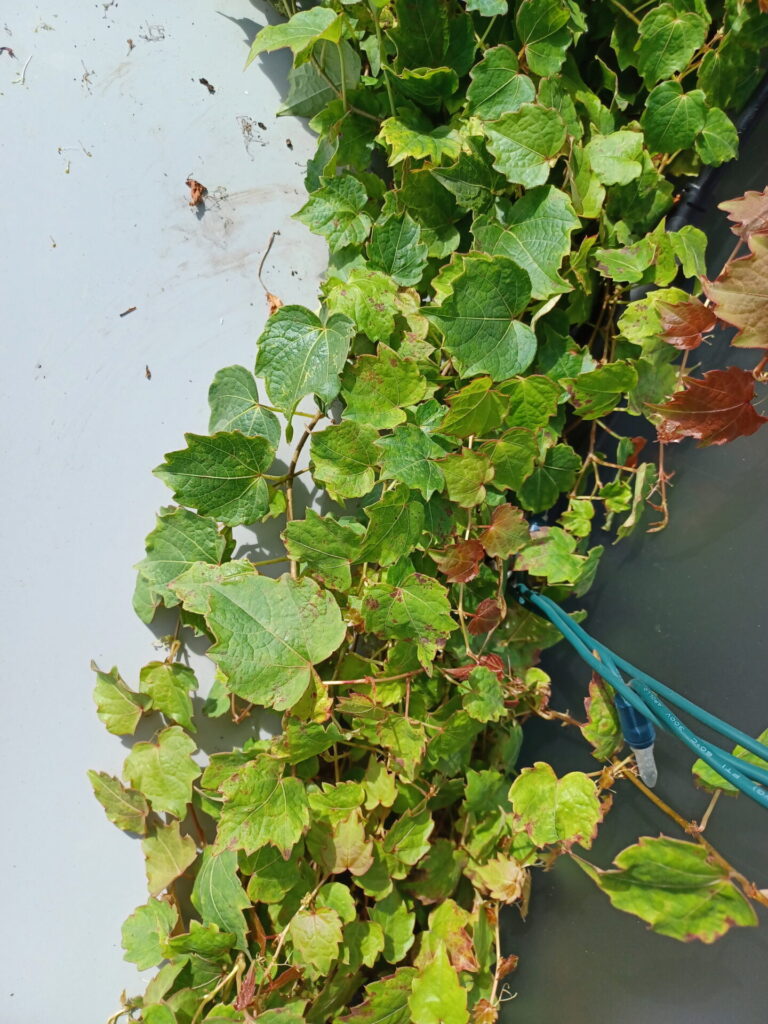
we live in a “green” 8 storey condominium in Toronto, sedum roof, garden terraces. This ivy (Boston ivy?) has been planted in the garden terraces, and is rapidly growing up the walls (aluminum siding over concrete), looks good, but recent appraisal by gardener (to take over maintenance) “is destructive, will damage underlying concrete, as well and aluminum trim, should be moved ($s +++). Is this true?
Thank you for contacting the Toronto Master Gardeners about the ivy that is growing on your condo walls. Yes, the vine in your picture does look like Boston ivy (Parthenocissus tricuspidata). This vine has tendrils with small circular discs (called adhesive pads or holdfasts) that produce a super-adhesive glue that attaches the plant to surfaces so that it can climb. As with many gardening topics, there has been much discussion and debate among experts about whether Boston ivy damages concrete. The outcome of my research is that the current thinking of the majority of gardening experts is that Boston ivy clings to surfaces (including aluminum siding), and does not infiltrate the fabric of the structure. My research includes the references listed below. As expected there isn’t complete agreement. The first of the nine sources says that Boston ivy has the potential to damage masonry walls and buildings. Perhaps this is based on historical (outdated) thinking that ivy (in general, there are many types) would root into mortar and pull it out.
While the consensus is that Boston ivy does not damage concrete, it can cause other damage. It requires regular maintenance (which could be considerable) to keep it within bounds, so that it does not cover or invade windows, eaves, gutters and roof shingles (which could be lifted). It is also extremely difficult to remove, which will definitely damage any paint that it has grown over. If it must be removed, it is best to not rip it away from the wall, because the adhesive pads will be left behind and require considerable scrubbing etc to remove from the wall. Instead, the plant should be cut at its base, separating it from its roots, and left to die back and to allow the adhesive pads to deteriorate before separating it from the wall. The ideal solution for this is to grow Boston ivy on a trellis placed several inches in front of the wall, so the plant can be taken down if needed (maybe not practical in your case ?).
As to whether Boston ivy can cause other damage to aluminum siding, for example finding its way underneath it and growing enough there to push this siding away from the wall, or having the weight of the vine pull this siding away from the wall, these are certainly theoretical possibilities. However, there appears to be nothing conclusive written about this at the moment, although I could also not find any reports of this kind of damage, in spite of the fact that Boston ivy has been grown on aluminum siding for many years.
Several of the articles below mention the benefits of growing Boston ivy on walls : insulating and cooling the building by providing a thermal shield, protecting a wall from ultra-violet rays, trapping pollutants and muffling noise.
Hopefully the articles below will be helpful as you consider options for the Boston ivy growing on your condo walls.
Boston Ivy – Washington State University
Parthenocissus tricuspidata – Missouri Botanical Garden
Parthenocissus tricuspidata – North Caroline State Extension
Boston Ivy On Walls – Gardening Know How
Ivy of buildings – Royal Horticultural Society
Do Climbing Plants Damage Walls ? – Laidback Gardener
Maintaining Boston ivy growth – Marjorie Harris
Gardening 101 : Boston Ivy – Gardenista
Vines on Buildings – University of Illinois Extension
Aug 18, 2022

